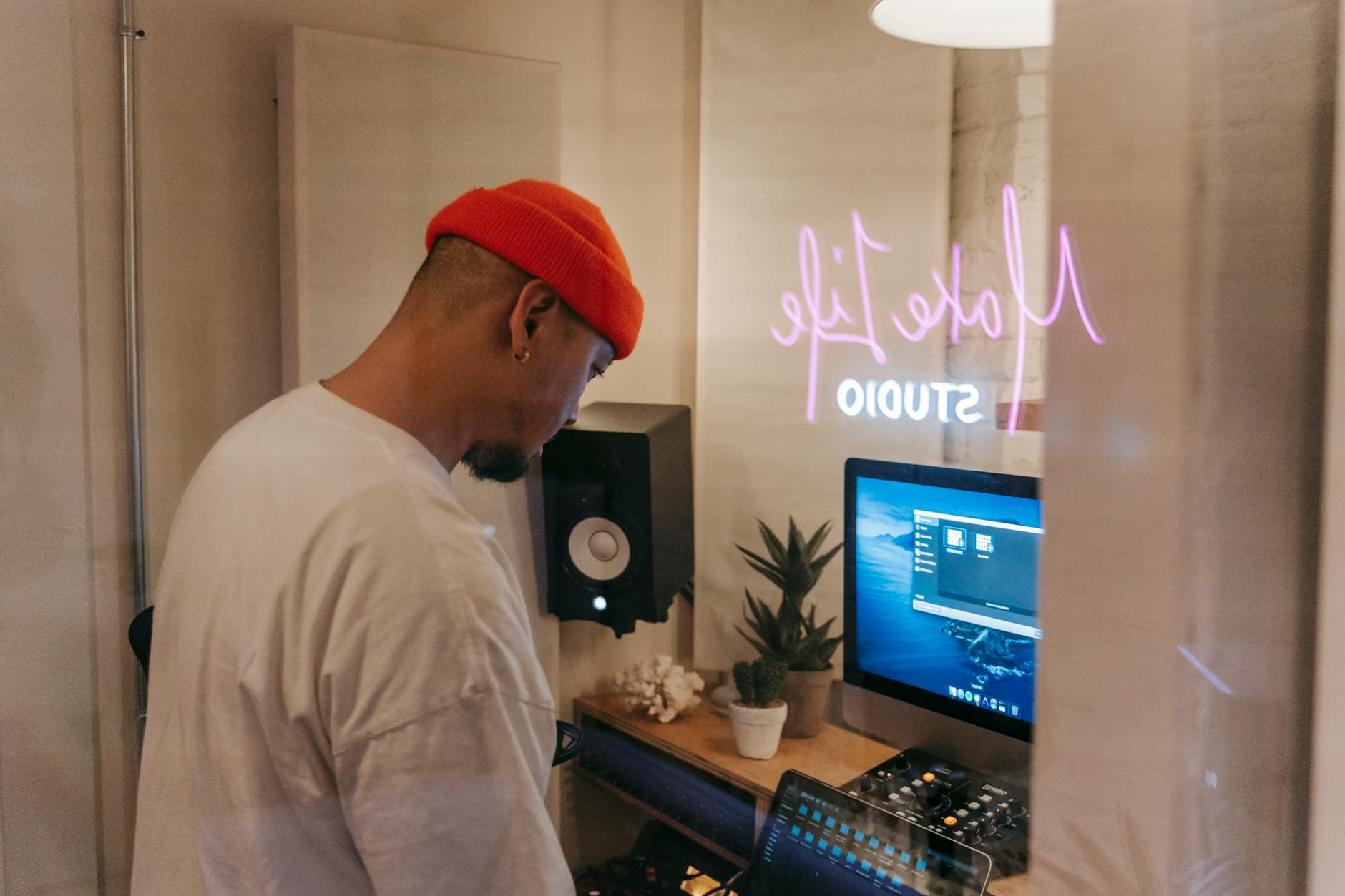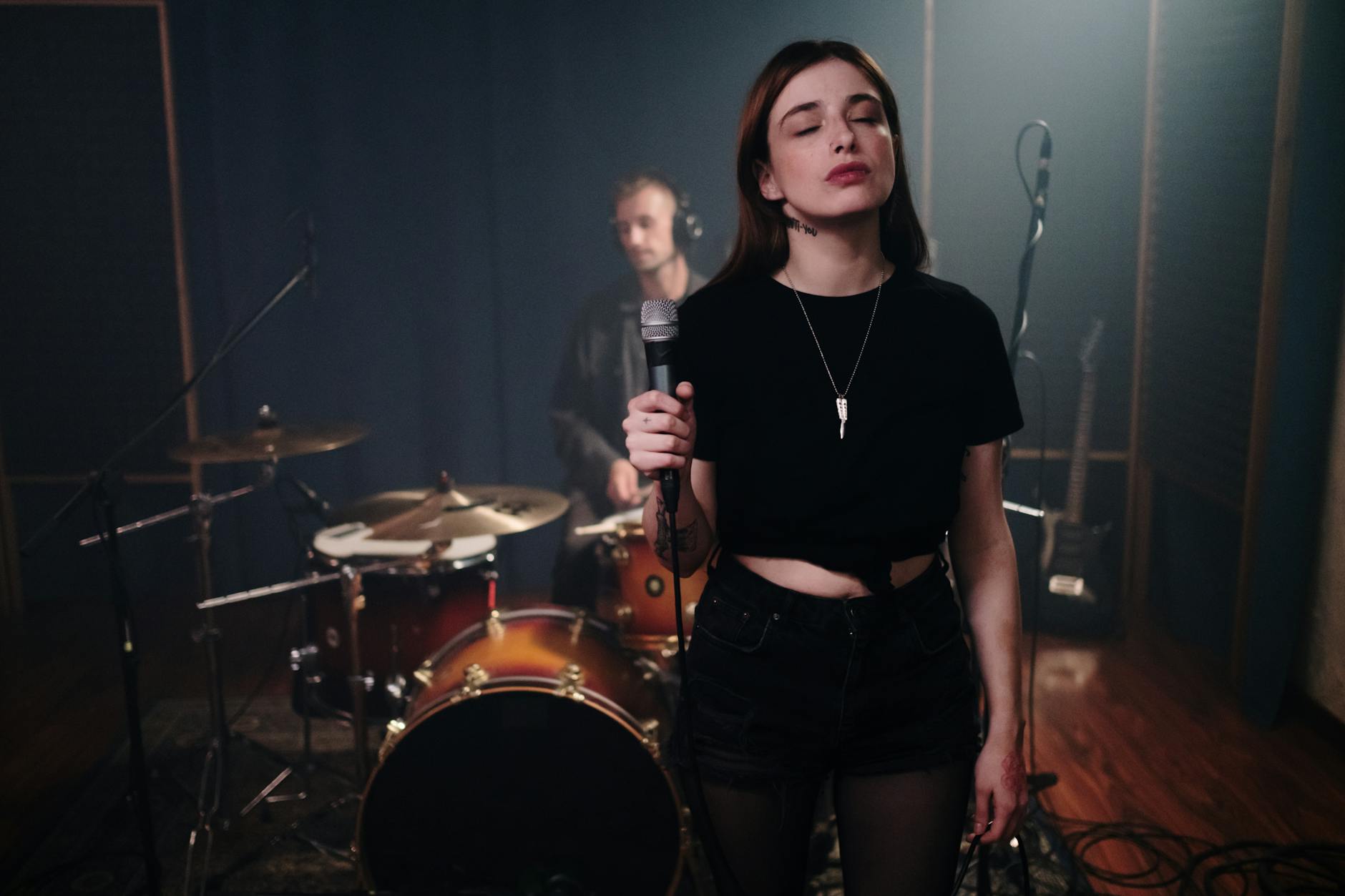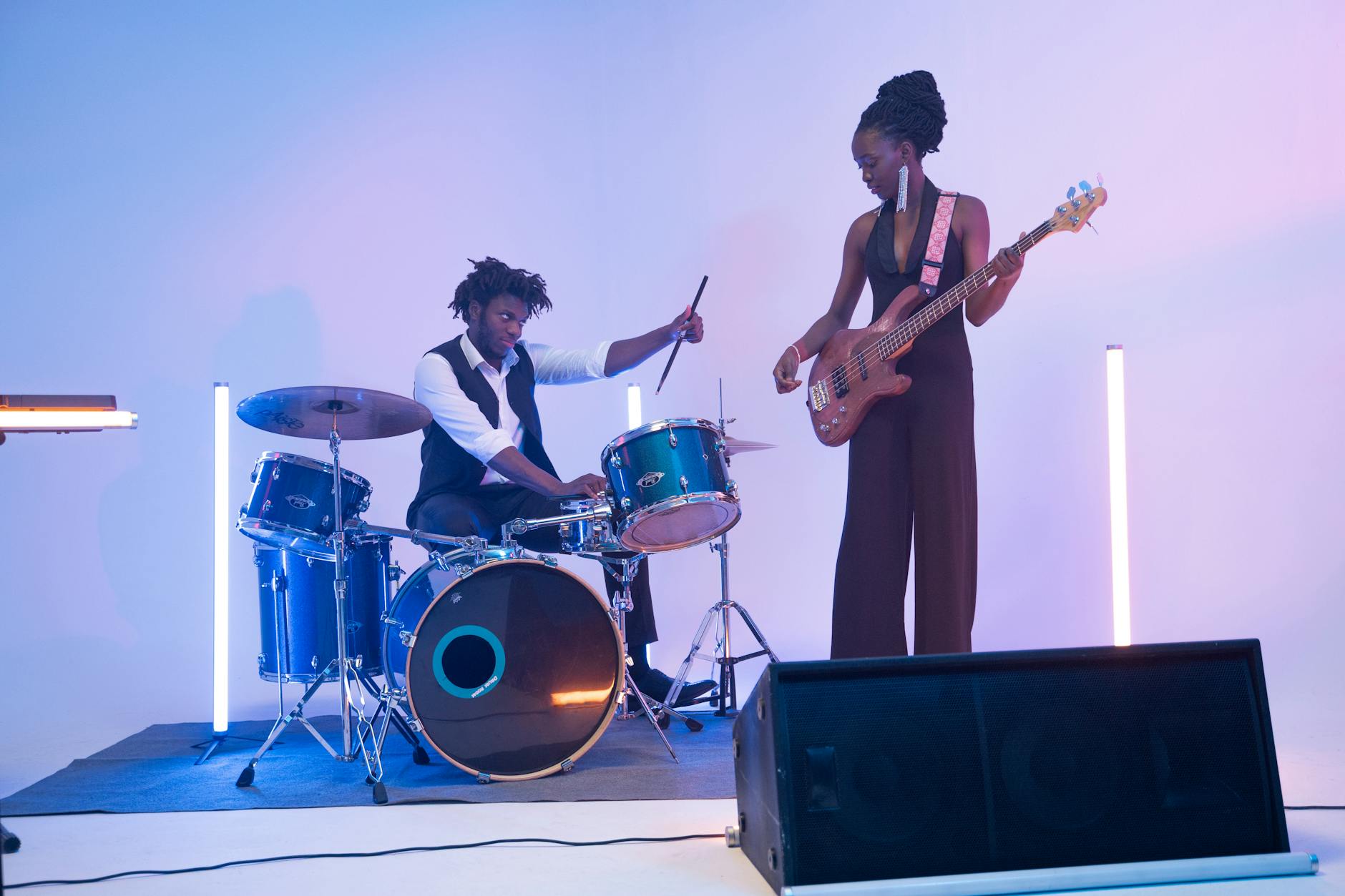How Can Immersive Spatial Mixing Transform Your Guitar Recordings?
Master spatial audio guitar mixing: elevate your home recordings with immersive, pro-level sound. Discover 3D techniques—start mixing better today!

Imagine your guitar floating above, swirling behind, or wrapping around the listener—not just stuck on the left or right. That’s the promise of spatial audio guitar mixing. As streaming platforms jump on immersive audio, home studios have a shot at pro-level, 3D sound. Traditional stereo tools don’t cut it anymore. These days, even a modest setup can create depth and movement once reserved for blockbuster albums or high-end studios. Spatial audio lets each guitar leap out, move, and blend in ways that flat stereo simply can’t. All it takes is the right workflow, some modern plugins, and a willingness to rethink everything you know about mixing guitars.
What You'll Learn:
- The basics of spatial audio guitar mixing and why it matters now
- How to turn each guitar part into a 3D object and place it anywhere
- Tools, DAWs, and plugins needed for Dolby Atmos and Ambisonic formats
- Real-world immersive guitar workflows you can use at home
- Pro tips for panning, reverb, EQ, and LFE for modern guitar mixes
- How to master and release your spatial guitar recordings on streaming platforms
What Is Spatial Audio Guitar Mixing? (And Why It Matters Now)
Spatial audio isn’t just a buzzword—it’s the biggest leap in mixing since stereo. For guitarists, that means moving beyond simple left-right panning into the world of true three-dimensional sound. Traditional mixing pins guitars between two speakers. Spatial audio unlocks every direction: above, behind, closer, farther. And it’s not just a tech demo—listeners now expect more. Streaming giants and headphone makers push immersive formats, so sticking to stereo is like refusing to go HD in a 4K world.
Spatial Audio vs. Stereo: The New Sonic Frontier
Stereo mixing limits placement to the X axis—the space between left and right speakers. Want to separate rhythm and lead? Panning is all you’ve got. Spatial audio, using formats like Dolby Atmos or Ambisonics, adds the Y and Z axes. Suddenly, a guitar can hover above or swirl behind the listener. According to Sweetwater’s immersive audio guide, object-based mixing lets you drop sounds anywhere, raising guitar mixing to a new level. Here’s a quick comparison:
- Stereo: Left/right only, limited depth
- Spatial audio: Full 3D—front, back, side, above, and under
- Object-based: Each part is independent, never fighting for space
Why Guitarists Should Care About Immersive Mixing
Turns out, spatial audio isn’t just an engineer’s toy. For musicians, it’s a canvas. Lead lines can soar overhead. Harmony guitars can fill the ceiling. Rhythms can anchor the floor. This fresh separation prevents muddiness that ruins dense rock or layered indie tracks. Plus, immersive mixes sound huge even on headphones or phone speakers—key when listeners rarely own big speakers anymore. Keeping up with tech helps future-proof your work.
Key Formats: Dolby Atmos, Ambisonics, and More
Spatial audio covers several formats. Dolby Atmos rules streaming platforms, supporting up to 128 individual tracks (“objects”) that you can spread anywhere in the sphere. Ambisonics—used for VR or 360 video—captures audio for the full sphere, great for ambient or experimental guitar work. DTS:X offers flexibility, reading room layouts to position sounds perfectly. Got a guitar part that clashes in stereo? In spatial mixing, just move it up, back, or around for clarity. These choices set the foundation for everything that follows.
The next section shows how object-based mixing puts these ideas into action—giving guitar parts their own place and sonic identity.
How Object-Based Mixing Transforms Guitar Tracks
Object-based mixing turns each guitar track into its own “object,” giving it an address in three-dimensional space. This approach unlocks creative tricks that go way beyond panning. No more crowding your leads and riffs into the same audio lane. Now, guitar layers can float apart, rotate overhead, or sit behind the drummer for cinematic effect. The trick is knowing how—and when—to move guitars around for clarity, separation, and impact.
Turning Guitar Parts into 3D Objects
Setting up object-based mixing means treating each guitar part—lead, rhythm, harmonies—as its own entity inside your DAW. Here’s a simple workflow:
- Bounce or record each part separately (no bouncing stacks together)
- Assign each to an object track in your software (Logic, Nuendo, etc.)
- Use the plugin’s 3D panner to place each in the sound field
According to Production Expert’s Atmos tutorial, this gives total independence for motion, size, and elevation. For example, put rhythm guitars at ear level, send harmonies up high—never fighting for space.
Creative Placement: Above, Behind, and Around the Listener
With full 3D freedom, the old rules change. Want a solo to “fly in” from above? No problem. Here are some sonic placement ideas:
- Lead guitar: slightly above and behind for drama
- Harmonies: high in the sphere to separate from rhythm parts
- Ambient or FX-heavy parts: circling or panned wide for movement
This vertical and depth separation prevents masking—a big problem in dense rock mixes. Creative moves like swirling guitars or sending a lick around the listener give your recordings life and space.
Avoiding Common Pitfalls: Masking and Motion
There are warnings too. Move objects too fast and it’s disorienting—advice from Greg Wilder suggests keeping any pan or movement over 250ms for natural motion. Don’t forget about frequency masking. Use vertical space to separate parts, but avoid stacking too many elements overhead. And always check the overall mix—headphones and stereo downmixes can sound different from full 3D.
Up next: the tools and plugins that make immersive guitar mixing possible, even in a small studio.
Essential Tools and Plugins for Immersive Guitar Mixing at Home
Getting started with spatial audio guitar mixing doesn’t mean buying a spaceship's worth of gear. Many DAWs and plugins bring immersive sound into reach for home recordists. The key is picking the right combination for your workflow—object-based (Atmos), Ambisonics, or both. The basics? A DAW that supports these formats, a few specialized plugins, and an adventurous mindset.
DAWs and Plugins: What You Need to Get Started
Three DAWs stand out for immersive mixing: Logic Pro, Steinberg Nuendo, and Reaper. All support Dolby Atmos object tracks or Ambisonic plugins. Essential plugins include:
- Dolby Atmos Music Panner (AU/VST3/AAX)—for object placement and size
- Spacelab—algorithmic 3D reverb and spatial EQ
- IEM Plug-in Suite and Ambisonic Toolkit—for Ambisonics encoding/decoding
Start simple. Logic includes a built-in Atmos workflow, so Mac users don’t have to hunt down extra software. Reaper, with IEM plugins, excels for Ambisonics. Nuendo provides deep pro features for both formats.
Step-by-Step: Mixing Guitar in Dolby Atmos at Home
Set up is fast:
- Create separate tracks for each guitar part
- Route as objects in your DAW’s Atmos bus
- Load the Dolby Atmos Music Panner on each guitar track
- Set the spatial position—elevation, depth, and object size
- Check binaural and speaker rendering for translation
The MusicRadar Atmos integration guide offers example settings and detailed steps. Start by moving rhythm parts left and right, then elevate harmonies, and swirl ambient guitars for movement.
Ambisonics and Beyond: Expanding Your Toolkit
Ambisonic workflows add another layer for creative recording. Tools like IEM’s encoder/decoder let you capture and place guitars in a full sphere—a trick used in experimental genres. Spacelab’s spatial reverb wraps every part in a custom 3D space. Want more? Try combining Ambisonic busses with object sends for hybrid mixes. Many plugins, like Spacelab, work in both modes, adding great flexibility for evolving projects.
These tools don’t replace good ideas. But they open the door to sonic spaces that pull listeners in—and keep them curious for more.
Pro Tips, Creative Workflows, and Common Mistakes in Spatial Guitar Mixing
Even with powerful tools, spatial audio guitar mixing is easy to get wrong. The magic comes from restraint, intention, and a few pro tricks. Done right, immersive mixes pull listeners in. Done wrong, they overwhelm or disorient. Here’s how to keep your guitars crisp, moving, and musical—while avoiding listener fatigue.
Creative Automation: Moving Guitars Through Space
Static placement works but lacks excitement. Automate panning and elevation for live, breathing sound. Tips for smooth movement:
- Keep movement slow—over 250ms—to sound natural
- Move solos gradually; avoid sudden “jumps”
- Animate ambient parts to swirl or shift as the song builds
Subtle, thoughtful motion gives each section a story. The best immersive mixers start with a static “anchor,” then slowly build dynamics as tracks evolve.
Spatial Effects: Reverb, EQ, and LFE Routing
Spatial plugins like Spacelab let you apply reverb with 3D placement and unique early reflection patterns. Try this:
- Put reverb on leads, send reflections above/beside the listener
- Use spatial EQ to carve room for each part—especially in crowded mixes
- Send low frequencies from bass or heavy guitars to the LFE channel for punch without mud
This selective routing keeps mixes clear even in busy sections. Always check translation: immersive mixes can sound bass-heavy in LFE, or too bright after binaural downmixing—sometimes a post-render EQ is needed.
Mistakes to Avoid: Overcrowding and Listener Fatigue
It’s tempting to pan every guitar everywhere. Don’t. Too much movement or stacking at one elevation creates chaos, not clarity. Warnings from experienced engineers:
- Anchor important parts (main riff, vocal) to stable zones
- Limit motion—one or two moving guitars per section max
- Always check on headphones and speakers for balance
This keeps your mix immersive yet focused, with creative space that’s exciting rather than exhausting.
Master these elements, and the final step is preparing your immersive guitar tracks for the world—mastering and release.
Mastering and Releasing Your Immersive Guitar Mixes
Mastering spatial audio mixes isn’t just “louder and shinier.” It’s about translating your 3D sound across headphones, speakers, and every platform. The right workflow ensures your immersive guitar magic works everywhere—whether on Apple Music’s spatial catalog, a Tidal playlist, or a surround system in a high-end studio.
Mastering for Spatial Audio: What’s Different?
Standard mastering rooms won’t cut it. Michael Romanowski’s Coast Mastering studio, as covered by Sound On Sound, set the benchmark with specially calibrated 3D monitoring for immersive formats. Here’s what matters:
- Monitor in both speaker arrays and binaural headphones
- Tune for translation—the mix must sound right everywhere
- Check LFE and spatial movement for clean, focused energy
Fail here, and your guitar can vanish or smother other parts on some systems.
Getting Your Mixes Heard: Streaming and Distribution
Platforms like Apple Music, Tidal, and Amazon Music now stream spatial audio. To prep your immersive mix:
- Render masters as ADM/BWF or binaural files
- Follow platform-specific formatting (e.g., Dolby Atmos ADM for Apple)
- Double-check downmixes—often, the stereo version is what most hear first
Test your mixes on headphones, phone speakers, and big rigs—each reveals problems before release.
Pro Workflow: Collaborating and Getting Feedback
Immersive music is still new for most. Work with an engineer or peers to get fresh ears on your mix. Ask about:
- Motion—too much or too little?
- Vocal/guitar clarity
- Listener fatigue—does the 3D space invite or distract?
Treat feedback seriously. Even experienced mixers catch new ideas from outside perspective. The right master, release, and review cycle ensures your immersive guitar tracks make the impact they deserve.
Experiment with these workflows, and your next guitar recording could be the one that stands out on any playlist.
Frequently Asked Questions
What is spatial audio mixing for guitar?
How do you mix guitar in Dolby Atmos at home?
Why use spatial mixing techniques for guitar recordings?
What’s a common mistake with immersive guitar mixes?
Which plugins are best for spatial audio guitar mixing?
Spatial audio guitar mixing unlocks a new universe of creativity. Guitars no longer sit flat—they roam, soar, and envelop, creating stunningly immersive experiences for the listener. With tools like Dolby Atmos Panner and Spacelab, it’s possible to craft guitar tracks that truly stand out on any platform. The real secret? Mastering the art of placement, movement, and restraint. Start small: pan one guitar up, automate a lead to drift, or send harmonies above. Keep checking how it all translates through headphones and speakers. Each mix is a chance to surprise the listener. One solid experiment is worth a hundred old-school stereo routines. Give spatial mixing a shot, and your guitar sound will lead—not follow—the next wave in recording.
Key Takeaways
- Immersive spatial mixing makes guitar recordings more vivid and memorable
- Most home studios can create 3D mixes with a few core tools
- Mastering and streaming require special workflows but open new listener experiences
- Each experiment brings real growth—no pro studio required
Related Topics
Explore more articles in these topics to deepen your knowledge.
Related Articles

Best Free DAWs for Guitarists in 2025 with Setup & Workflow Tips
Discover the best free DAWs for guitarists 2025. Compare features, get workflow tips, and find the perfect guitar-friendly DAW. Start recording better now!

Fender Studio App for Mobile Multitrack Guitar Recording (2025): The Ultimate Free Solution for Guitarists
Discover how the Fender Studio app guitar recording 2025 brings easy multitrack studio power to your phone. Start recording pro guitar tracks now!

Fender Studio App 2025: Free Multitrack Guitar Recording on Mobile and Desktop
Master the Fender Studio guitar recording app—unlock free multitrack recording on mobile or desktop. Capture ideas fast. Start creating now!
Discover more insights from our blog to enhance your musical journey.
